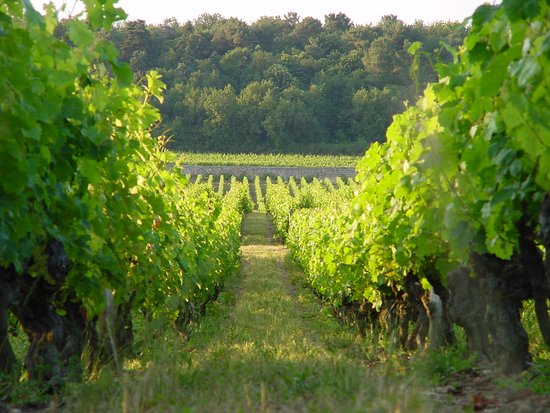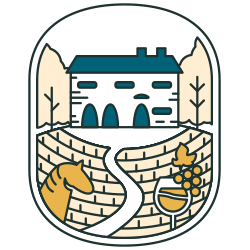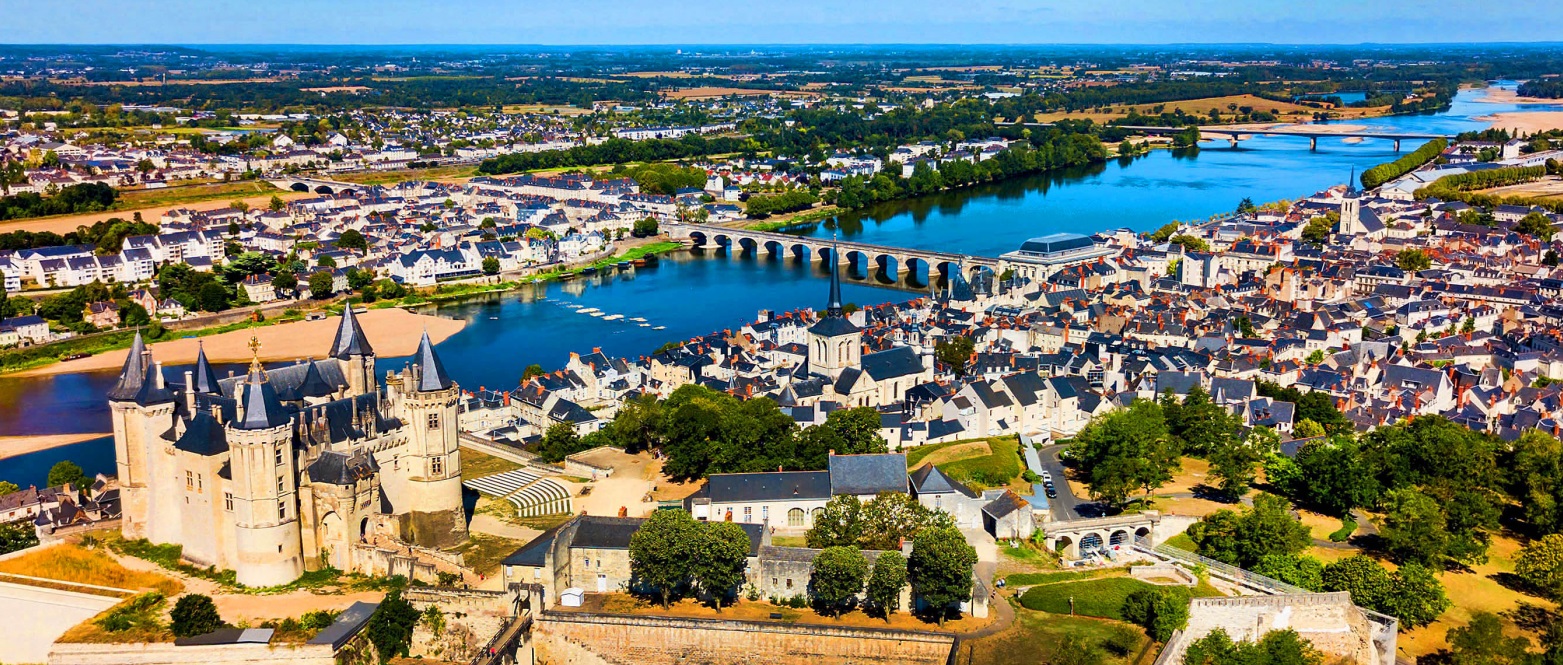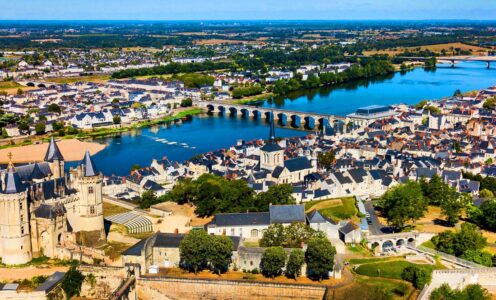Saumur, tourist town par excellence. Indeed, a city on the banks of the Loire with dazzling white walls and iridescent blue roofs, Saumur recounts the chapters of its history to the powerful and majestic rhythm of the river. Royal city and princely castle, place of safety and Protestant intellectual center, equestrian capital with a name evocative of fine bubbles or still wines. It is all these events and all this know-how that the river serenely reflects above the limestone hillside.
Strengthened today by its exceptional heritage and the reputation of the Cadre Noir and the vineyard, Saumur is a privileged tourist destination which knows how to offer rich encounters and unusual discoveries in a preserved environment . Classified as a Tourist Resort since January 17, 2014, its equestrian tradition and its Loire heritage give it a double UNESCO World Heritage .
History & heritage of Saumur
The possibility of crossing the river at the confluence of the Thouet leads to an ancient occupation of the site even if the affirmation of the city stems, in the 10th century , from the establishment of the monastery of Saint-Florent and a defense tower by the Count of Blois. Attached to the County of Anjou then to the Plantagenet Empire , the city finally passed into the royal fold in 1203, then finding itself placed at the heart of the History of the Kingdom of France ; The Hundred Years' War and the Wars of Religion were at the origin of important fortifications, Saumur serving as an advanced base for the royal troops.
The city is adorned with beautiful homes and an imposing enclosure punctuated by crenellated towers still visible today, all often initiated by a hand of royal blood. The masterpiece is the ducal castle 14th century princely palace built by Lohuis I Duke of Anjou , brother of King Charles V, and whose proud silhouette dominates the city. As you wander through the alleys of the historic district, passers-by will be seduced by historic sections of wood, a finely carved dormer window, an overhanging watchtower or by the forged volutes of a later balcony.
Described as the “second Geneva”, the city hosted a Protestant academy during the military government of Philippe Duplessis-Mornay , advisor to Henri IV. The Catholic reform led to the establishment of numerous congregations which began building convents and chapels. That of Notre-Dame des Ardilliers , centered in plan and covered with a grandiose dome, is also the manifesto of a rich and varied architecture which should encourage the visitor to open the doors of nearly sixty buildings registered or classified under the Historical Monuments in the city.
In the 18th and 19th centuries, the echo of the hooves of horses ridden by students and officers of the Cavalry School , while on the quays, goods and boatmen took part in the height of river trade . On barges, strings of coconut and barrels of wine, saltpeter and sugar, sail and are sold from Orléans to Nantes, towards Paris or towards the Atlantic. The city is growing and large-scale urban planning projects are leaving a monumental and indelible mark on the city. The neo-classical theater with its imposing colonnade or the neo-Gothic town hall captivate the visitor who, crossing the river, discovers the Loire front where tufa and slate stretch out on the south bank.
Tourism
This exceptional concentration of civil and religious, public and private monuments with strong heritage interest has enabled it to be labeled as a City of Art and History . The city's churches, mansions, Cavalry School and museums offer so many discoveries and different ways to go behind the scenes of History. From the medieval enamels of the Château-Museum to the Second World War machines of the Armored Museum , a journey through time is assured.
The municipality and Saumur associations know how to animate and promote their heritage and know-how. Festivals, parties and concerts , varied cultural programming, but also sports competitions and trade fairs punctuate the calendar.
Activities and know-how
Among the local productions, the wines of Saumur are undoubtedly those which attract laymen or connoisseurs eager to discover the secrets of making the divine nectar. Around thirty AOCs cover Saumur and seven appellations contain the Saumur destination in their title, including Saumur-Champigny . A large wine house or a busy winemaker in his cellar, they all happily welcome visitors who come to “taste Saumur”.

From this accomplished journey from cellars to cellars, we must not neglect the detour by the old stills of Maître Combier , liquor maker since 1834, or by the vast galleries dug into the tuffeau which see the white cap of the mushroom .
An equestrian city where the gleaming boots and harnesses of the Cadre Noir parade in public, craftsmen such as the saddler-saddler or the bootmaker work leather in their workshops while those of the patenôtriers in the Fenêt district have long been deserted; However, the jewelry tradition is still illustrated by a few establishments whose activity is focused on the production of medals in particular and by higher education courses in goldsmithing and jewelry .
Unmissable events
Every year, here are the unmissable events in Saumur:
- Festivini . (from June to September)
- Anjou Vélo Vintage , (in June)
- Carousel , (Around July 14)
- Les Grandes Tablées du Saumur-Champigny (July 31 – August 1)


